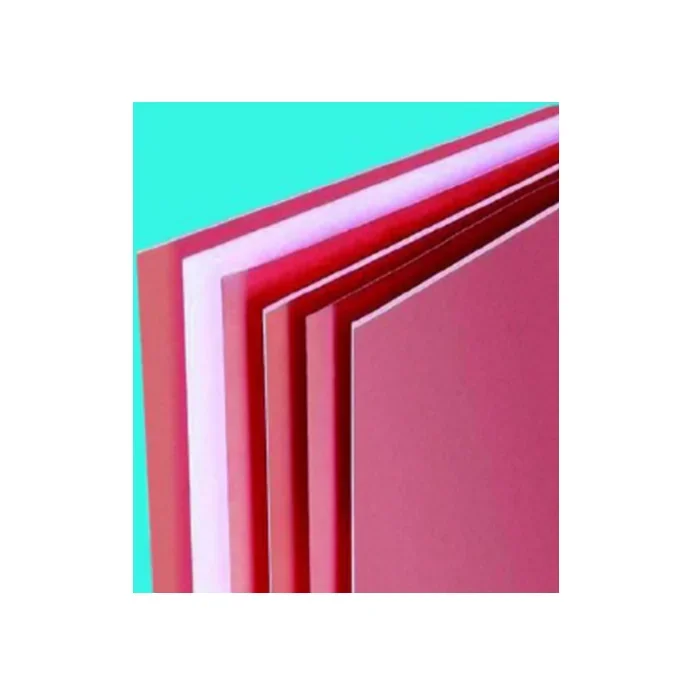Looking to enhance your projects with a durable and versatile material? What if you could discover the perfect solution in PTFE glass fiber substrate? Imagine the endless possibilities for your creations with this innovative material at your fingertips. Transform your designs with the strength and flexibility of PTFE combined with the resilience of glass fiber.
PTFE Glass Fiber Overview
Unique Features
When it comes to PTFE glass fiber substrate, you benefit from its unique composition, combining PTFE and glass fibers. This fusion results in a material with exceptional strength-to-weight ratio. The low friction properties make it ideal for various applications.
Core Benefits
You'll appreciate the high temperature resistance of PTFE glass fiber substrate, allowing it to withstand extreme heat without degrading. Its chemical inertness opens up a wide range of applications where exposure to harsh chemicals is common. The non-stick surface properties ensure easy release of materials, reducing maintenance hassles.
Material Comparison
Comparing PTFE glass fiber substrate with traditional fabrics reveals its superiority in terms of durability and longevity. Unlike conventional fabrics, this material offers enhanced thermal stability, making it suitable for high-temperature environments.

Brown Teflon Coatings
Non-Adhesive Fabrics
When working with bronze Teflon coatings, you benefit from their non-adhesive properties. The PTFE glass fiber substrate ensures that materials do not stick during manufacturing processes. This feature is especially crucial in industries where sticking can lead to product defects.
The bronze Teflon coating's non-stick nature also makes it incredibly easy to clean and maintain. You won't have to struggle with removing residues or buildup, saving time and effort in your cleaning routines.
Durability Aspects
In challenging environments, you can rely on the long-lasting performance of bronze Teflon coatings. These coatings exhibit exceptional resistance to wear and tear, ensuring they maintain their effectiveness even under harsh conditions. Whether exposed to high temperatures or abrasive materials, the coatings can withstand repeated use without losing their quality.
Properties and Characteristics of PTFE Glass Fiber Substrate
Heat Resistance
When it comes to ptfe glass fiber substrate, you benefit from its high tolerance to extreme temperatures. This material exhibits exceptional thermal stability, making it ideal for demanding applications. ptfe glass fiber substrate boasts fire-retardant properties, ensuring safety in high-heat environments.
Chemical Stability
Ptfe glass fiber substrate showcases remarkable resistance to various chemicals and solvents. Its inert nature towards corrosive substances makes it a preferred choice in industries dealing with chemical processing. The material's chemical stability ensures longevity and reliability in harsh environments.
Electrical Insulation
With ptfe glass fiber substrate, you can rely on its excellent electrical insulation properties. Its high dielectric strength makes it suitable for a wide range of electrical applications. Moreover, this material provides effective insulation against high voltages, enhancing safety in electrical components.

Applications Across Industries
Aerospace Uses
When it comes to aerospace applications, PTFE glass fiber substrate plays a crucial role in enhancing aircraft components. Its lightweight properties make it ideal for reducing overall weight, contributing to fuel efficiency. The substrate is commonly used in manufacturing parts like panels, radomes, and antennas.
In the aerospace industry, PTFE glass fiber substrate is favored for its high strength-to-weight ratio. This material ensures durability without adding unnecessary bulk to aircraft structures. By incorporating this substrate into various components, you can significantly improve the performance and longevity of aerospace systems.
Electronics Sector
In the realm of electronics, PTFE glass fiber substrate is highly valued for its exceptional insulation properties. It is extensively used in the production of circuit boards and electrical components. The substrate's ability to provide reliable insulation helps prevent electrical shorts and enhances the overall performance of electronic devices.
When utilized in electronic applications, PTFE glass fiber substrate contributes to maintaining signal integrity and reducing signal loss. Its low dielectric constant ensures minimal interference, making it an essential material for high-frequency applications such as antennas and microwave circuits.
Construction Applications
Within the construction sector, PTFE glass fiber substrate finds extensive use in architectural membranes and roofing materials. Its unique properties make it an excellent choice for creating energy-efficient building envelopes. By utilizing this substrate in construction projects, you can enhance thermal performance and reduce energy consumption.
Advantages of PTFE Glass Fiber Substrate Over Other Materials
Performance Metrics
When considering PTFE glass fiber substrate, focus on its key performance indicators. Tensile strength ensures durability, while flexibility allows adaptability to various applications. The material's impact resistance safeguards against damage, and its dimensional stability maintains shape integrity.
Lifespan Extension
By incorporating PTFE glass fiber substrate, you enhance product longevity. This extension effectively reduces maintenance costs by minimizing replacements and repairs. The material's durability significantly increases the lifespan of equipment across industries.
Cost Efficiency
Emphasize the cost-effectiveness of PTFE glass fiber substrate in your operations. The material's long-term benefits lead to substantial savings through reduced replacement needs. By utilizing this substrate, you enhance overall operational efficiency and cost-effectiveness.

Technological Innovations
Machining Advances
When it comes to machining advances for PTFE glass fiber substrate, you benefit from cutting-edge techniques. Precision cutting methods allow for customized shapes, catering to your specific needs. CNC machining capabilities enable the creation of intricate designs with utmost accuracy.
Substrate Enhancements
Exploring substrate enhancements for PTFE glass fiber substrate opens up a world of possibilities for you. Various options for surface treatments and coatings are available, allowing you to tailor the substrate to your requirements. These enhancements not only expand the performance capabilities but also contribute to the longevity of the material.
Why Choose PTFE Glass Fiber?
Versatility Highlights
When it comes to PTFE glass fiber substrate, you'll appreciate its versatility in various industries. It adapts seamlessly to different manufacturing processes, ensuring efficiency and reliability. Whether in aerospace, automotive, or electronics, PTFE glass fiber meets diverse application requirements effortlessly.
Industries across the board prefer PTFE glass fiber substrate for its unmatched qualities. From aerospace to medical devices, this material reigns supreme due to its exceptional properties. The substrate's popularity stems from its resistance to high temperatures, chemicals, and wear, outperforming traditional materials consistently.
Industry Preferences
In sectors like aerospace and electronics, PTFE glass fiber substrate is the top choice. Its widespread use in these industries is attributed to its superior performance and durability. Compared to conventional materials, PTFE glass fiber offers advantages like enhanced strength, corrosion resistance, and longevity.
-
Bullet list
-
Aerospace
-
Electronics
-
Medical Devices
Numbered list
-
Superior performance
-
Durability
-
Enhanced strength
Future of PTFE Glass Fiber
Emerging Trends
When it comes to unfilled PTFE, the future of PTFE glass fiber substrate looks promising. Innovations in product development are shaping the industry, with applications diversifying across various sectors. The demand for PTFE glass fiber is steadily increasing in new market segments.
-
Growing applications in industries like aerospace and automotive
-
Enhanced durability and resistance to chemicals and high temperatures
-
Improved flexibility and strength for advanced engineering solutions
Research Directions
As you delve into the realm of unfilled PTFE, current research directions focus on enhancing performance characteristics. Scientists and engineers are working towards refining the material's properties to meet evolving industry needs. Manufacturing processes are also undergoing advancements to ensure superior quality and efficiency.
-
Incorporating nanotechnology for enhanced properties
-
Investigating sustainable production methods for eco-friendly solutions
-
Exploring surface modifications for improved adhesion and compatibility
Final Remarks
In a world where durability, versatility, and performance are paramount, PTFE glass fiber substrates stand out as the ultimate choice. From their exceptional resistance to high temperatures to their widespread applications across industries, these materials offer unmatched value. The future of PTFE glass fibers looks promising, with continuous technological advancements pushing boundaries and opening new possibilities for innovation.
As you explore the realm of materials for your projects or applications, consider the unparalleled benefits that PTFE glass fibers bring to the table. Their unique properties and advantages make them a top contender in various fields. Embrace the power of PTFE glass fibers and unlock a world of opportunities for your next venture!

Frequently Asked Questions
What are the key benefits of using PTFE glass fiber substrates?
PTFE glass fiber substrates offer exceptional chemical resistance, high temperature tolerance, low friction properties, and excellent electrical insulation. They are also durable and have a non-stick surface, making them ideal for various industrial applications.
How does PTFE glass fiber compare to other coating materials?
PTFE glass fiber substrates outperform traditional materials like rubber or plastic due to their superior strength, flexibility, and resistance to extreme conditions. They provide longevity, reliability, and cost-effectiveness in diverse industries.
In what industries are PTFE glass fiber substrates commonly used?
PTFE glass fiber substrates find applications in industries such as aerospace, automotive, food processing, electronics, and medical devices. Their versatility and unique properties make them indispensable for demanding environments requiring high-performance materials.
Can you elaborate on the technological innovations related to PTFE glass fiber substrates?
Technological advancements have enhanced the manufacturing processes of PTFE glass fiber substrates, leading to improved quality control, increased customization options, and the development of specialized coatings for specific industry needs. These innovations ensure optimal performance and efficiency.
What sets PTFE glass fiber apart as a material of choice for future applications?
The continuous research and development in PTFE glass fiber technology promise further enhancements in terms of sustainability, efficiency, and adaptability to evolving industry requirements. Its proven track record of performance excellence positions it as a frontrunner for future material solutions.
